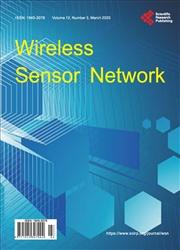Data Timed Sending (DTS) Energy Efficient Protocol for Wireless Sensor Networks: Simulation and Testbed Verification
引用次数: 5
Abstract
The Data Timed Sending (DTS) protocol contributes to the energy savings in Wireless Sensor Networks (WSNs) and prolongs the sensor nodes’ battery lifetime. DTS saves energy by transmitting short packets, without data payload, from the sensor nodes to the base station or the cluster head according to the Time Division Multiple Access (TDMA) scheduling. Placing the short packets into appropriate slots and subslots in the TDMA frames transfers the information about the measured values and node identity. This paper presents the proof of concept of the proposed DTS protocol and provides verification of the energy savings using the QualNet®; communication simulation platform (QualNet) and the SunTM Small Programmable Object Technology (Sun SPOT) testbed platform (for single hop and multi hop scenarios). The simulations and the testbed measurements confirm that the DTS protocol can provide energy savings up to 30% when compared with the IEEE 802.15.4 standard in unslotted Carrier Sense Multiple Access with Collision Avoidance (CSMA-CA) mode at 2.4 GHz frequency band.无线传感器网络数据定时发送(DTS)节能协议:仿真与试验验证
数据定时发送(DTS)协议有助于无线传感器网络(WSNs)节能,延长传感器节点的电池寿命。DTS根据TDMA (Time Division Multiple Access)调度,将传感器节点间的短报文传输到基站或集群头部,无需数据负载,从而节省了电能。将短数据包放入TDMA帧中的适当槽和子槽中传输有关测量值和节点身份的信息。本文提出了提议的DTS协议的概念证明,并提供了使用QualNet®节能的验证;通信仿真平台(QualNet)和SunTM小型可编程对象技术(Sun SPOT)测试平台(用于单跳和多跳场景)。仿真和试验台测量结果证实,在2.4 GHz频段,与IEEE 802.15.4标准相比,DTS协议在无槽载波感知多址免碰撞(CSMA-CA)模式下可节省高达30%的能源。
本文章由计算机程序翻译,如有差异,请以英文原文为准。
求助全文
约1分钟内获得全文
求助全文

 求助内容:
求助内容: 应助结果提醒方式:
应助结果提醒方式:


